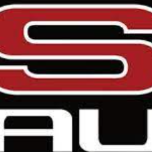Is Power (rwkw) Figure Everything? Why Are People So Hung Up On Kw Figures
Announcements
-
Latest Posts
-
Well, they really shouldn't rot like that. Have you been driving over spilled caustic soda or something?
-
By drifter17a · Posted
I guess i have not done much miles on mine. Do they fail / squeking sound coming from them after a bit of use? -
By drifter17a · Posted
Checking with alpha omega Spec from their website 100% CNC machined billet 7075-T6 aerospace alloy https://www.alphaomegaracing.com/product/evo-350mm-brembo-brakes/ -
By weikleenget · Posted
Hi again all, I’ve tried doing some searching on the topic but couldn’t find the answer I’m looking for. I deleted my clutch booster because it had an air leak and was squealing like a hog, and now my clutch has very poor pedal feel and the friction zone is way too small, so I believe I need a bigger diameter clutch master cylinder to compensate for not using the booster. I found a Wilwood option that’s 3/4” for a good price and will fit my 3AN clutch line, but all the firewall adapters I see online such as RB factory or Chase Bays are listed as RWD only (GTST/GTS). Link below. https://rbfactory.shop/products/nissan-to-wilwood-girling-clutch-master-cylinder-adapter My question is if these adapters will also fit a GTR, and if anyone has experience using a 3/4” CMC without the booster, my clutch is a Nismo coppermix twin plate. Thanks, always appreciate the advice!
-



Recommended Posts
Create an account or sign in to comment
You need to be a member in order to leave a comment
Create an account
Sign up for a new account in our community. It's easy!
Register a new accountSign in
Already have an account? Sign in here.
Sign In Now